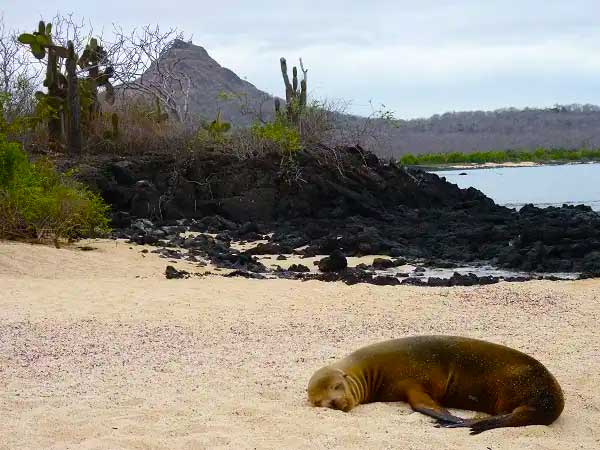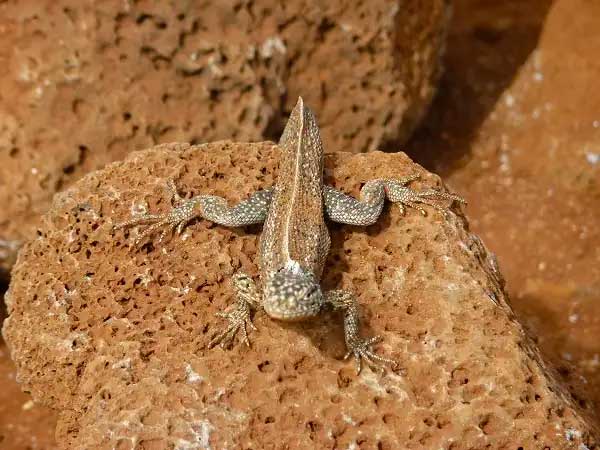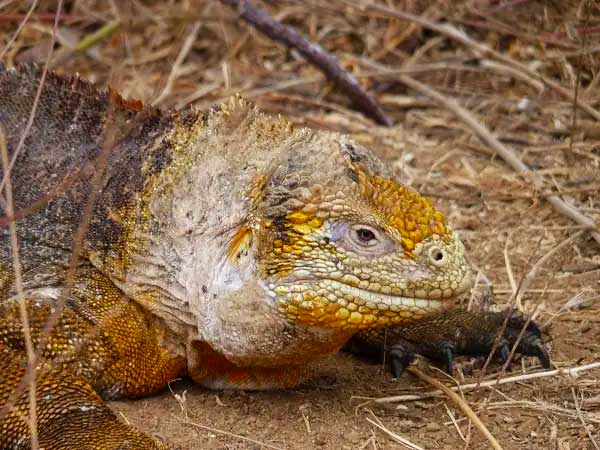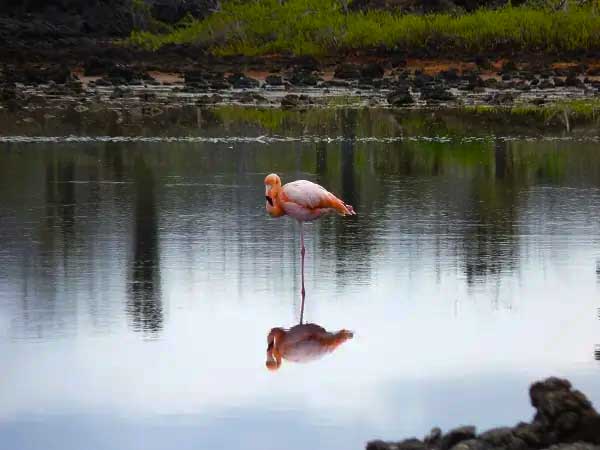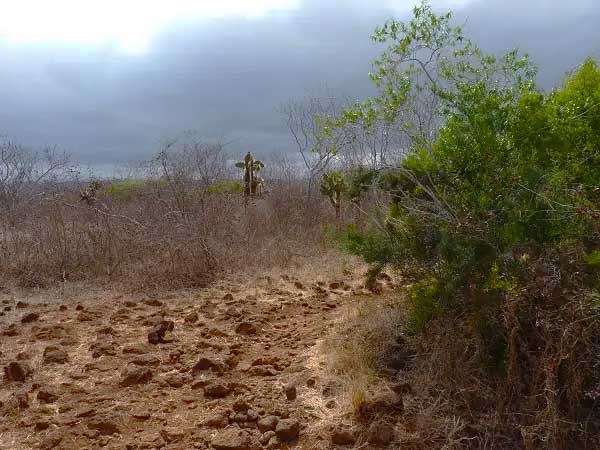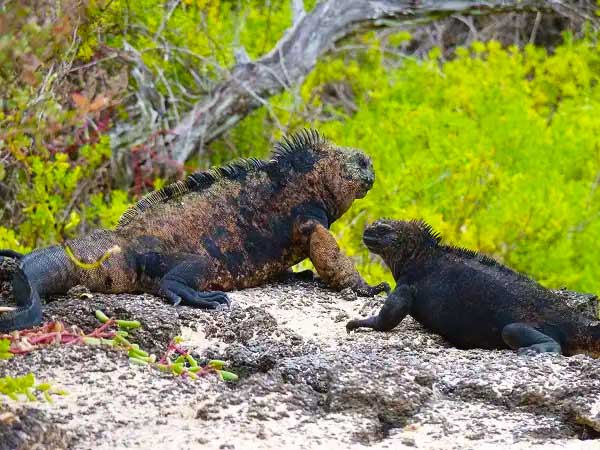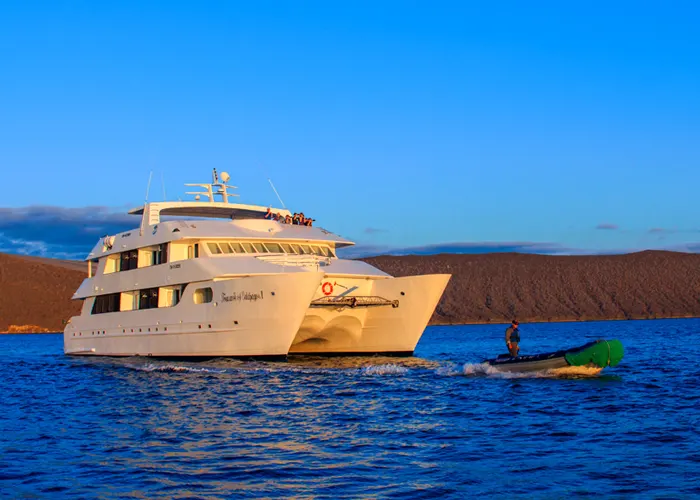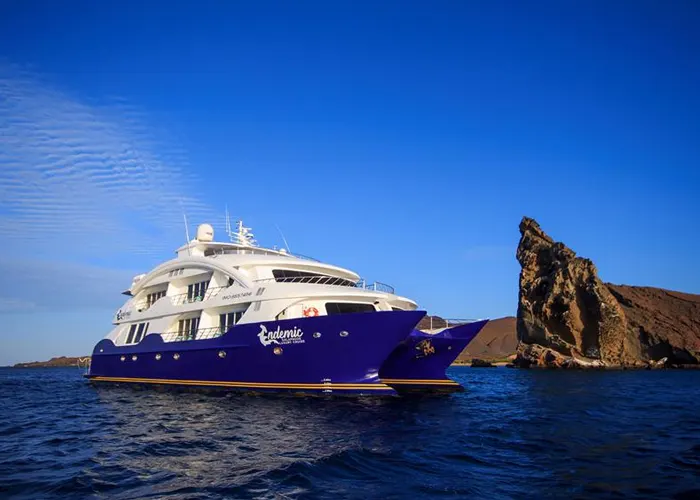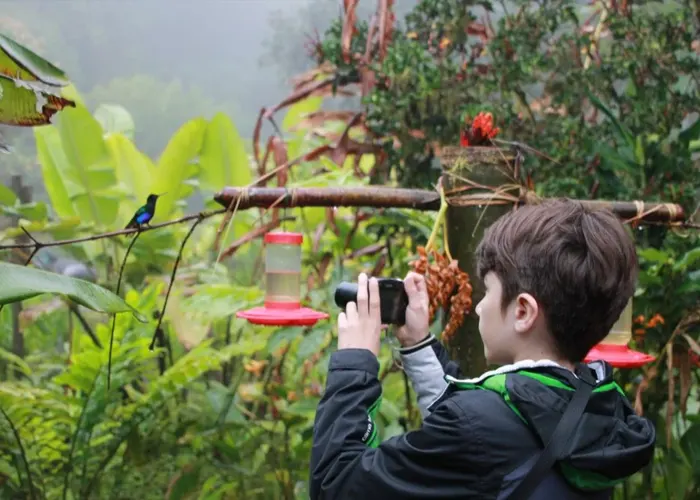Santa Cruz Island Galapagos
Santa cruz island - The galapagos Islands
Discover the Enchantment of Santa Cruz Island in the Galapagos
- Area: 986 km²
- Highest point: Cerro Cocker: 864 m
- Population: 15,000 inhabitants
- Travel options: Airplane (neighboring island of Baltra), ferry from Baltra, cruise ship
Visitor highlights:
- Highlands with twin craters
- Charles Darwin Station
- Tortuga Bay
- Las Grietas
- Bachas Beach
El Garrapatero - Black Turtle Cove
- Dragon Hill
- Important animals and plants: Giant tortoises, land iguanas, blue-footed boobies, sea lions, lava gulls, pelicans, flamingos, and much more.
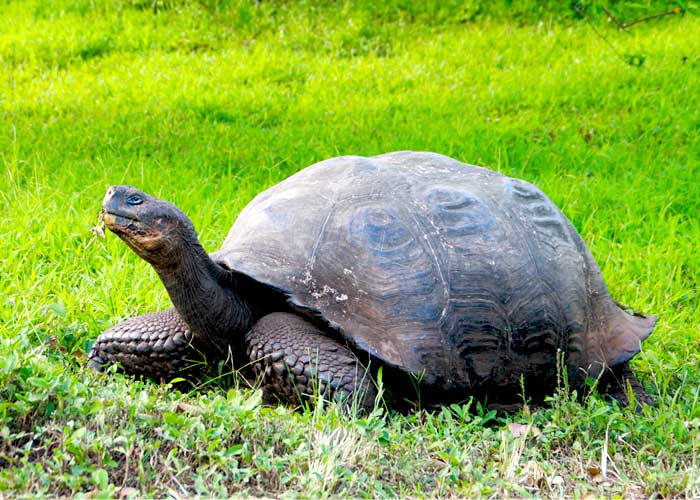
General information
Santa Cruz Island, second in size only to Isabela in the Galapagos archipelago, boasts the highest population. “Santa Cruz” is the Christian name given to the island, while its English name, Infatigable, originates from the HMS Infatigable, a ship of the line. The island’s capital, Puerto Ayora, serves as the starting point for various tours and excursions. Here, you’ll find most hotels, restaurants, shops, and local tour operators, as well as a hospital, banks, and small supermarkets. The Charles Darwin Station is also located on the outskirts of the town.
Santa Cruz Island is nearly circular, and its volcanic origins are particularly evident in the lush green highlands, where the twin craters of Los Gemelos and walkable lava tunnels stand as prominent visitor attractions.
As one of the main islands of the Galapagos, Santa Cruz is included in every cruise and island-hopping itinerary. We are happy to arrange a hotel stay here if you wish to explore the islands independently.
Places to visit on Santa Cruz Island
Highlands with twin craters and lava tunnels
The highlands of Santa Cruz are often visited during the drive from Baltra to Puerto Ayora as part of an island-hopping tour or cruise, as they are directly en route. For example, on a cruise aboard the yacht Aqua. Galapagos giant tortoises can be observed in their natural habitat at various ranchos. These immense animals leisurely roam through fields, meadows, and sometimes even along the road. The highlands also offer an intriguing environment for birdwatchers: with a bit of luck, you can spot Darwin’s finches, golden warblers, ruby-throated kites, and many more. The vegetation is characterized by Miconia and Scalesia. Many parts of the highlands are now utilized for agriculture.
The so-called twin craters are also located in the highlands. These are two collapsed calderas formed by the collapse of magma chambers. Visitors can hike along the edge of the craters.
A visit to the lava tunnels near Santa Rosa is also impressive and unforgettable. These tunnels were formed by lava that cooled and solidified on the outer surface but continued to flow inside, creating these tubes. Today, these tunnel systems, which can be up to 2 km long, can be explored with flashlights and preferably with a local guide.
When visiting the highlands, it’s advisable to bring a rain jacket and sturdy shoes.
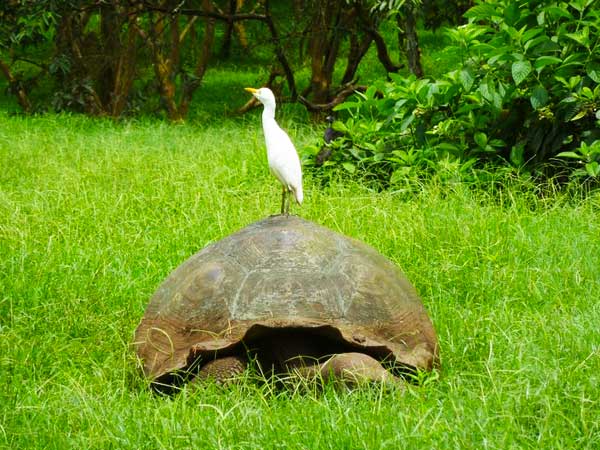
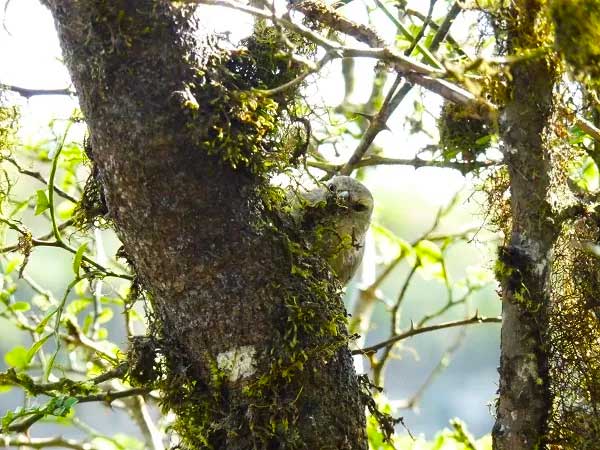
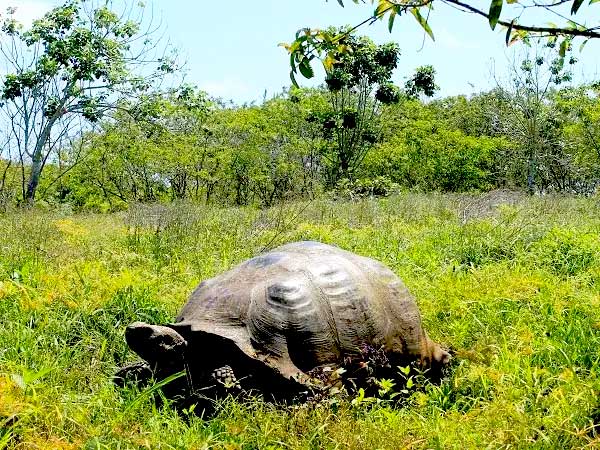
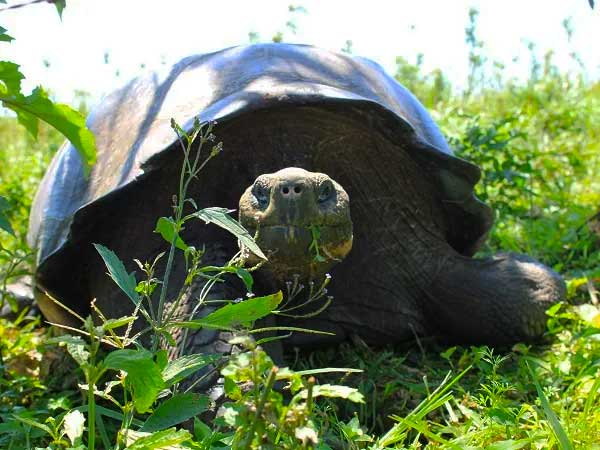
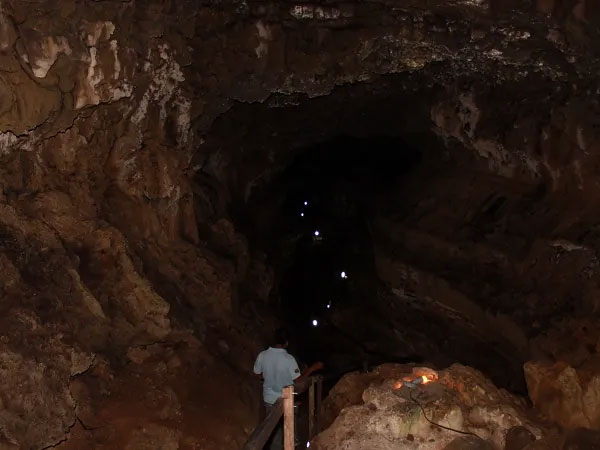
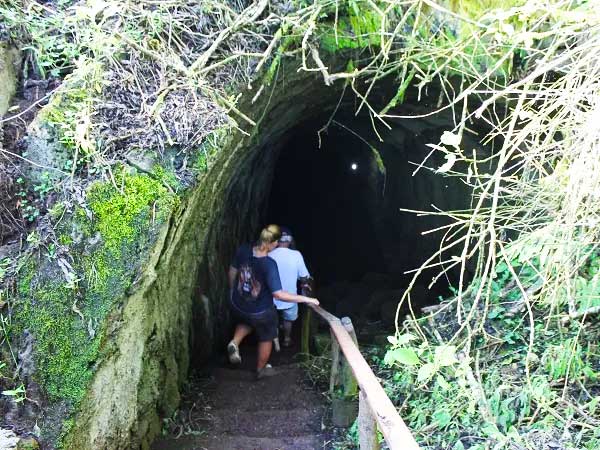
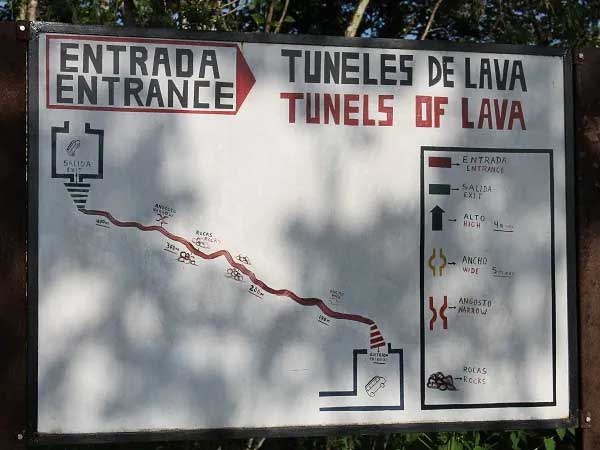
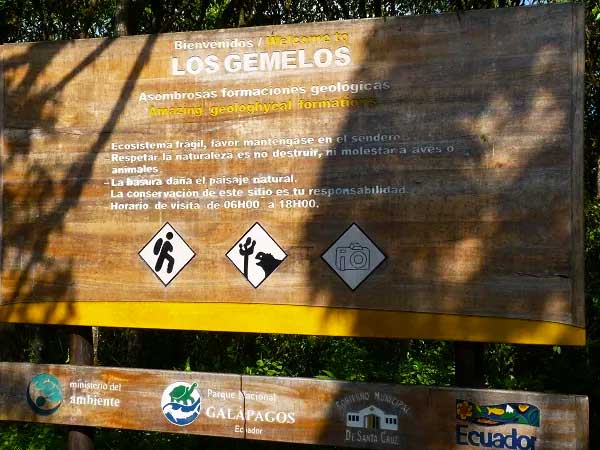
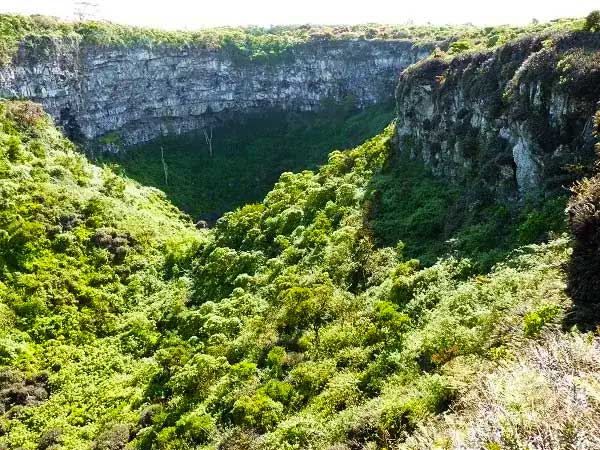
Charles Darwin Research Station and Fausto Llerena Turtle Hatchery
The Charles Darwin Station, situated approximately 10 minutes outside the heart of Puerto Ayora, hosts the Van Staelen permanent exhibition, showcasing the geography, geology, biology, and conservation efforts in the Galapagos Islands. As an international non-profit organization, the station collaborates with various entities, including WWF, to conduct research and environmental education initiatives for schools and communities.
Adjacent to the station is the Fausto Llerena breeding center, where baby turtles are nurtured until they reach around 5 years of age before being released into their natural habitat to maintain population stability. Visitors can observe turtles in various stages of development and learn intriguing facts about their upbringing.
During the summer months (January – April), it’s recommended to visit the station during the early morning hours to avoid the midday heat.
You can include a visit to the Charles Darwin Station as part of a cruise experience with yachts like Archipel and Solaris.
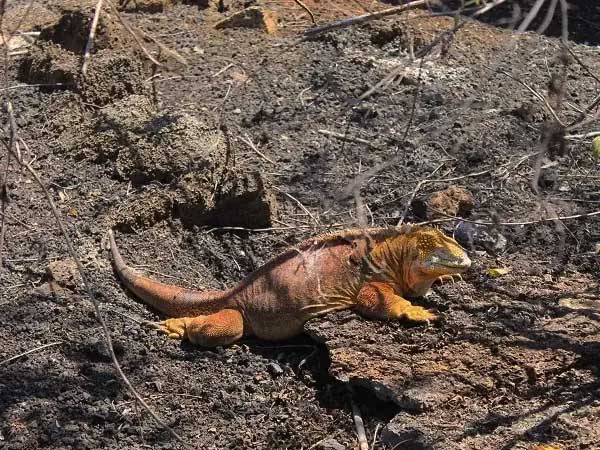


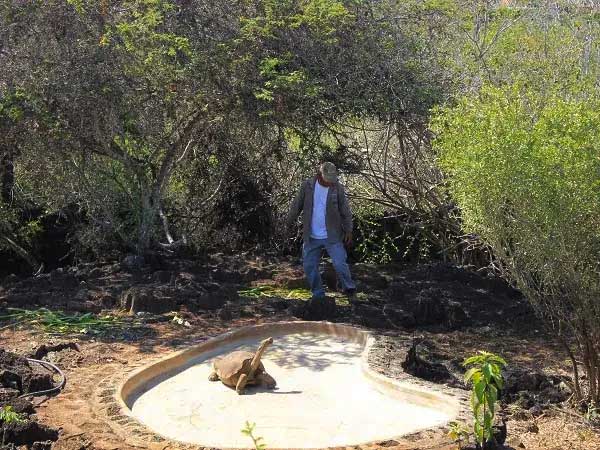

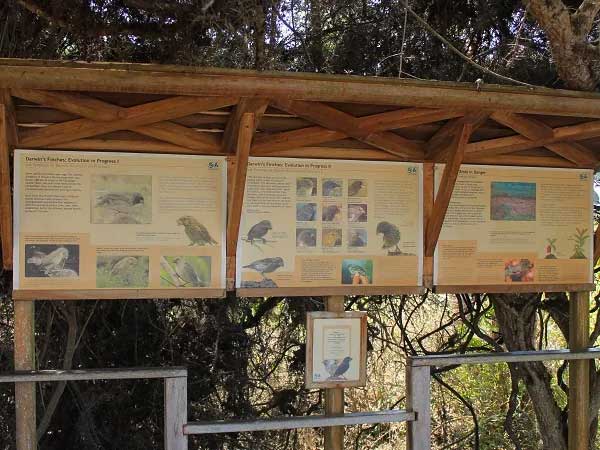
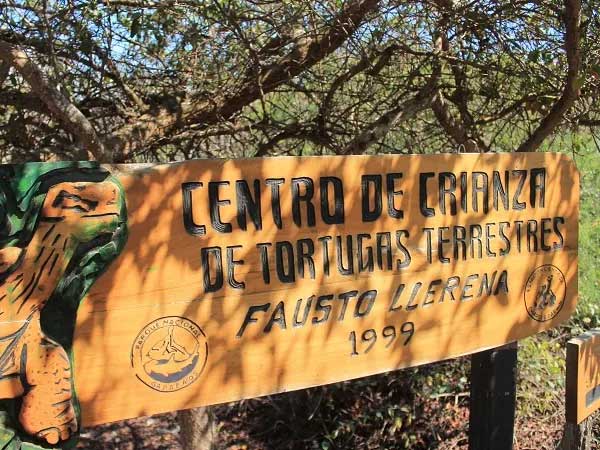
Tortuga Bay
Tortuga Bay is an enchanting white sandy beach accessible on foot from Puerto Ayora via a hiking trail, taking about an hour to traverse. The path winds through a dry zone adorned with tall opuntias, offering ample opportunities to observe land birds. Upon reaching the main beach of Tortuga Bay, you’ll be greeted by its expansive width, often populated by marine iguanas, brown pelicans, and red cliff crabs. However, swimming is prohibited due to strong currents along this section of the beach. For swimming and snorkeling enthusiasts, a short walk further ahead leads to a sheltered bay with another stretch of beach. Here, the underwater world teems with colorful tropical fish, and with luck, sightings of white-tip reef sharks or even tiger sharks are possible. It’s important to note the scarcity of natural shade at Tortuga Bay, so remember to bring a hat, ample sunscreen, and drinking water.
Tortuga Bay is a highlight of cruises, including those with the yacht Estrella del Mar.
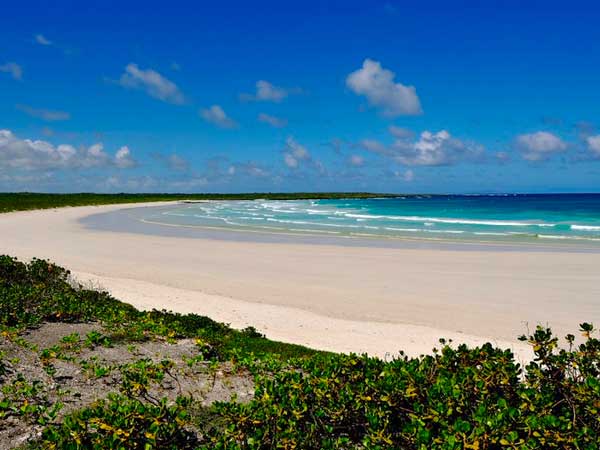
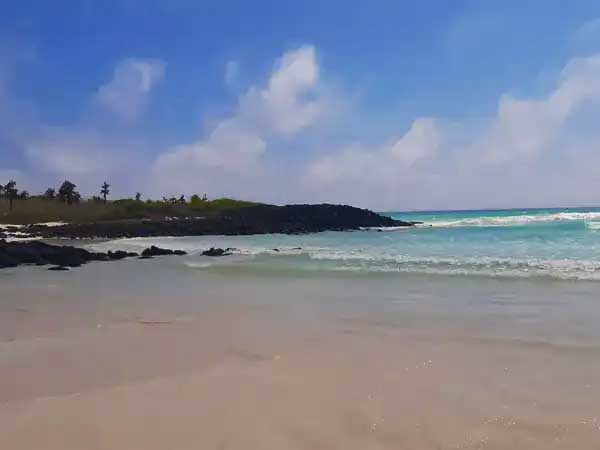
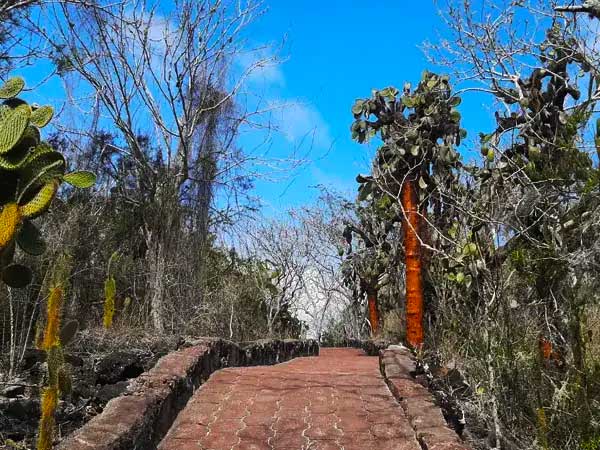
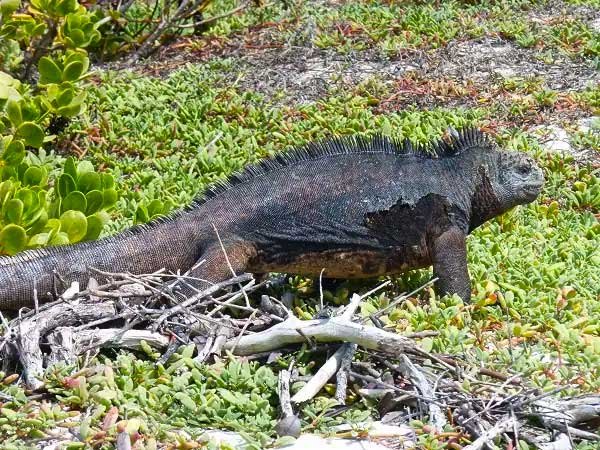
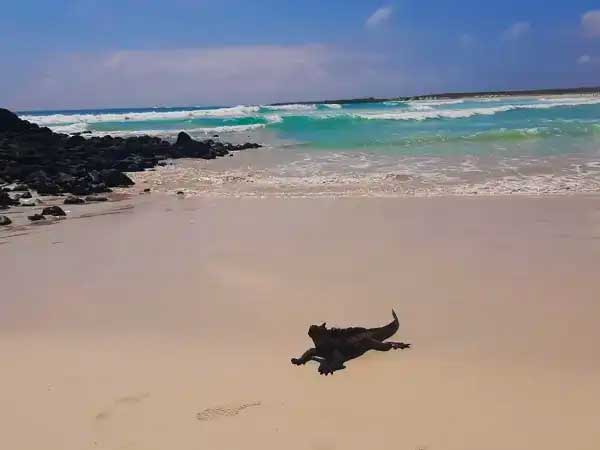
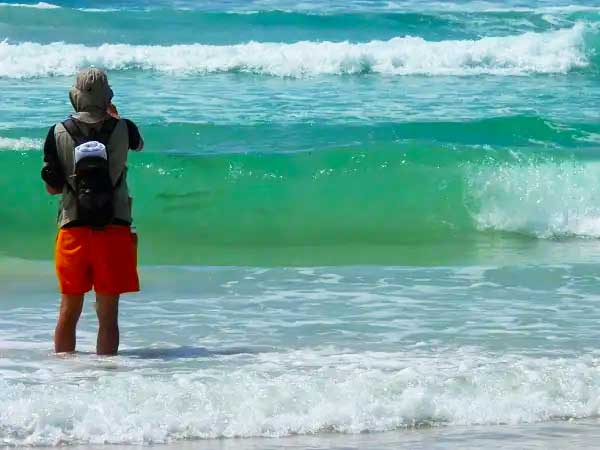
Las Grietas
The popular diving and snorkeling spot Las Grietas is located around 3 km outside of Puerto Ayora. To get to the site, take a water cab from Puerto Ayora to the jetty of a hotel. From there, a path lined with opuntias and dense bushes leads to the rock grottoes. This is where fresh water from the surface meets deeper-lying salt water, creating what is known as brackish water. In this turquoise blue water between the cliffs, white tip reef sharks, sea turtles, marine iguanas and many other sea creatures can be observed, while various species of seabirds fly overhead.
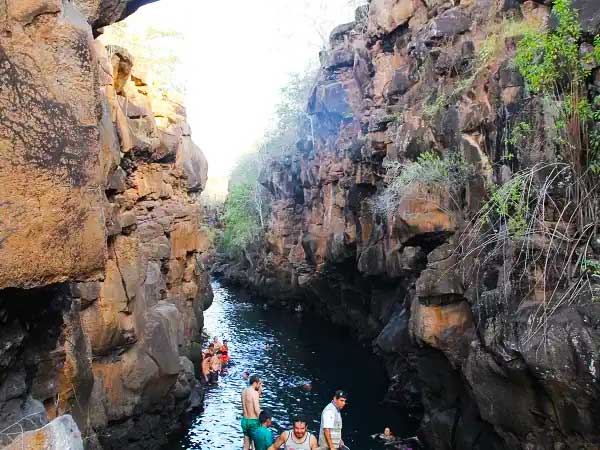
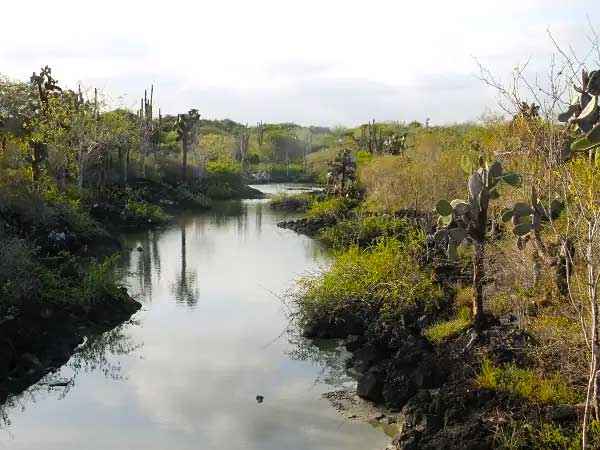
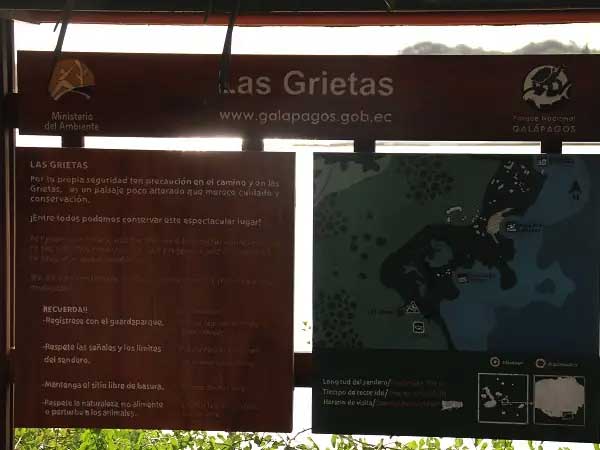
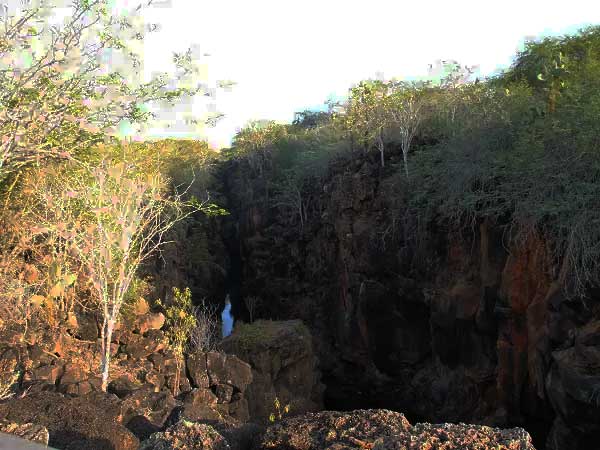
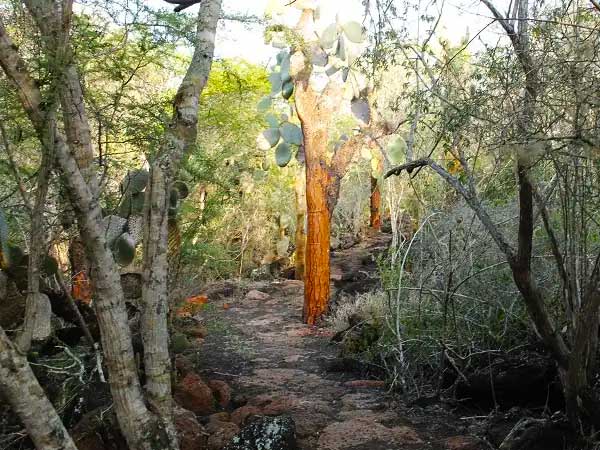
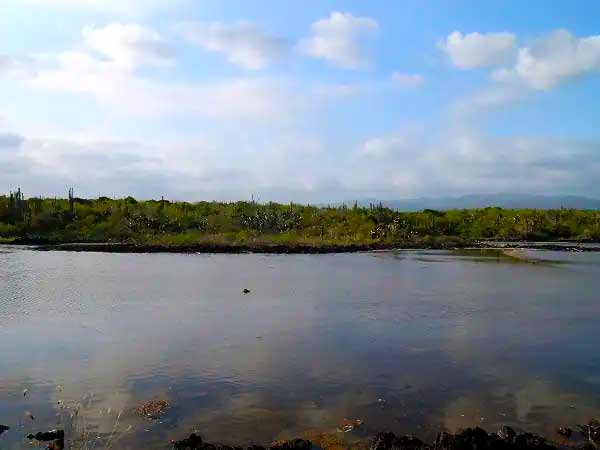
Black Turtle Cove
Black Turtle Cove is located a little to the east of Las Bachas. The cove can be reached by pangas, for example from Archipel I boat. However, you may only approach with the engine switched off so as not to disturb the fragile ecosystem of the mangrove forest. Rays, green sea turtles, pelicans, hammerhead sharks and many more live near the red mangroves of Black Turtle Cove.
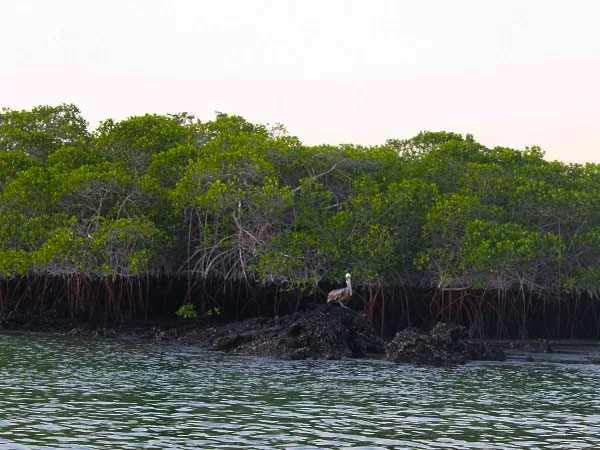
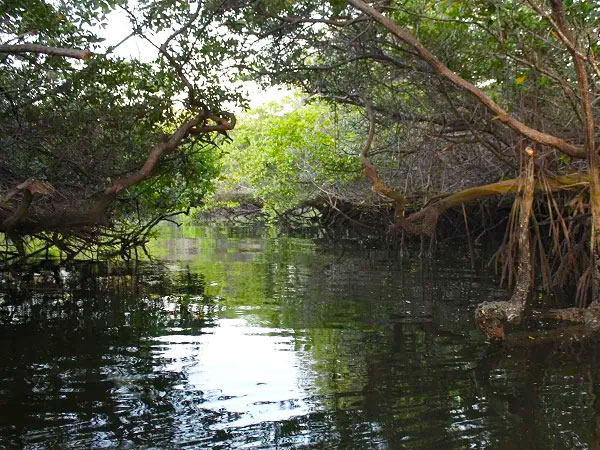
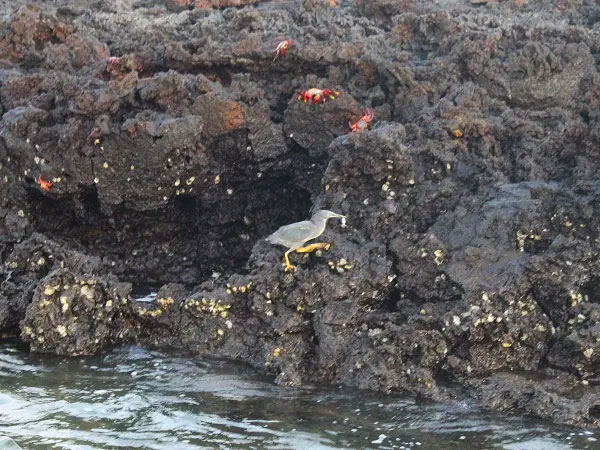

Bachas Beach
Las Bachas are two white coral sand beaches in the north of Santa Cruz. They are important nesting sites for sea turtles. On one of the beaches you can still find the remains of a floating jetty that was built during the Second World War. Both beaches are ideal for swimming and snorkeling as they are located in a sheltered bay. Behind one of the beaches is a small brackish lagoon. With a bit of luck, flamingos can be observed here, as well as whimbrels, stilts and other coastal birds. Las Bachas is one of the places that can only be visited on a cruise, for example on the Seaman Journey.
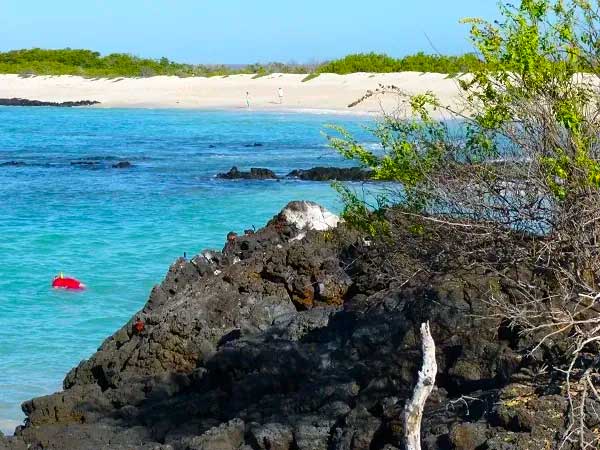
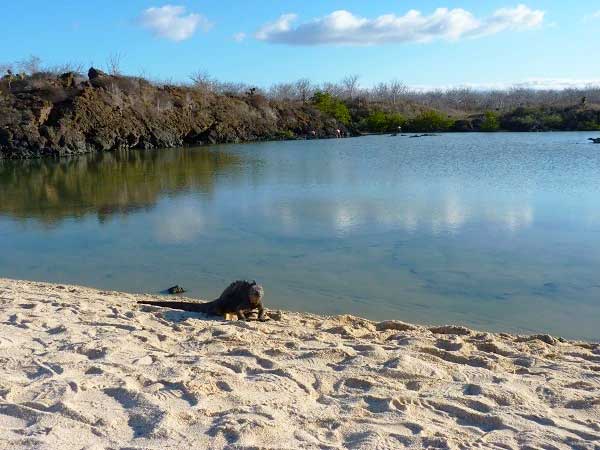
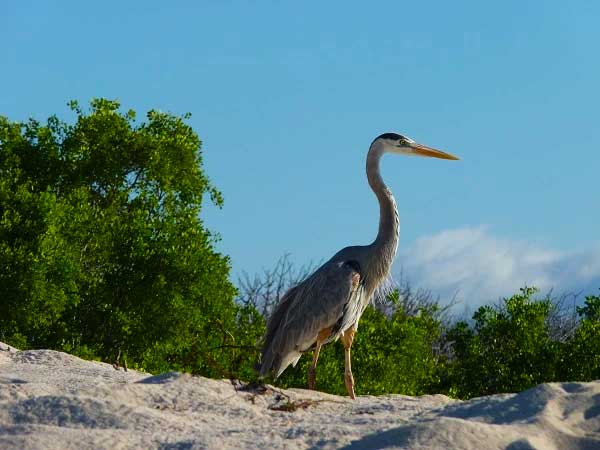
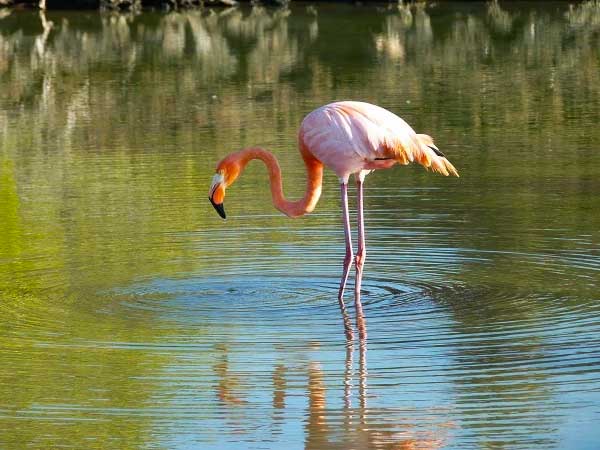

El Garrapatero
Garrapatero beach is located 19 km north of Puerto Ayora. The crystal-clear water and gentle waves offer ideal conditions for snorkeling or swimming. The approximately 1.5 km long white sandy beach invites you to go for a walk. El Garrrapatero can be reached by boat (approx. 20 min) or by car via Bellavista and Cascajo (approx. 50 min). Directly behind the beach is a lagoon where flamingos and Bahamian ducks are often to be found. Both coastal birds and birds of the dry zone can be observed here.

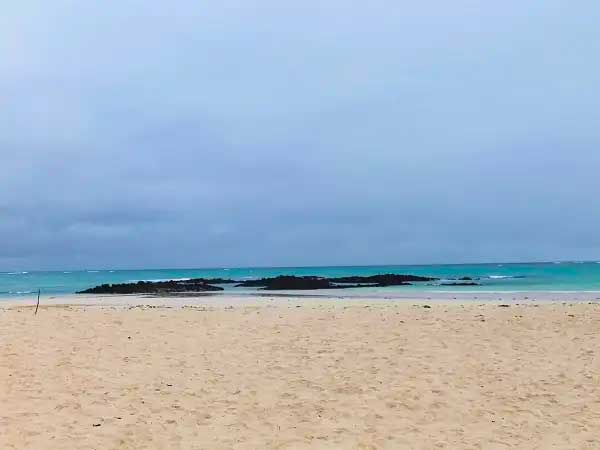

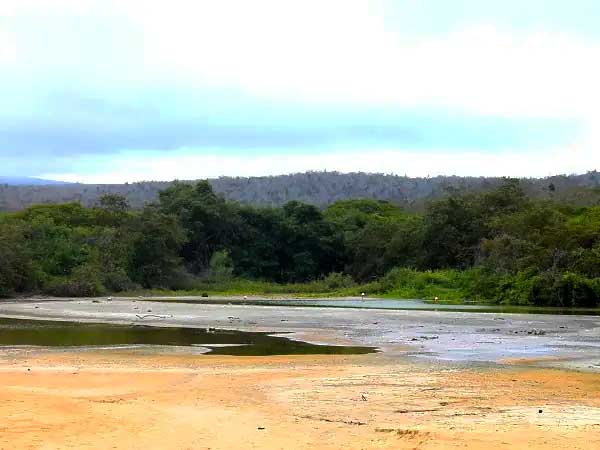
Dragon Hill
Dragon Hill stands as a testament to successful nature conservation efforts. In the mid-1970s, the population of land iguanas (Drusheads) here faced near-extinction due to feral dog predation. Responding to this crisis, the Charles Darwin Foundation initiated a breeding program at Satio and reintroduced 38 land iguanas to Venecia Island, north of Santa Cruz. Despite initial challenges with nesting conditions, the transfer of 100 m³ of soil from Venecia to Dragon Hill created an artificial nesting area, leading to a steady population recovery.
Subsequently, both Dragon Hill and Venecia witnessed population growth, with periodic translocations of iguanas from Venecia to Dragon Hill every three years. In 1993, a visitor center was established, granting exclusive access to visitors, reachable only by water via a rocky landing site. Ideal snorkeling conditions prevail, offering glimpses of rays, sharks, and sea turtles.
The trail leading to Dragon Hill and encircling it spans approximately 3 km, passing by two saltwater lagoons frequented by flamingos. Along the route, visitors can observe land iguanas in their burrows and crevices. Sturdy shoes and adequate sun protection are recommended for the hike.
